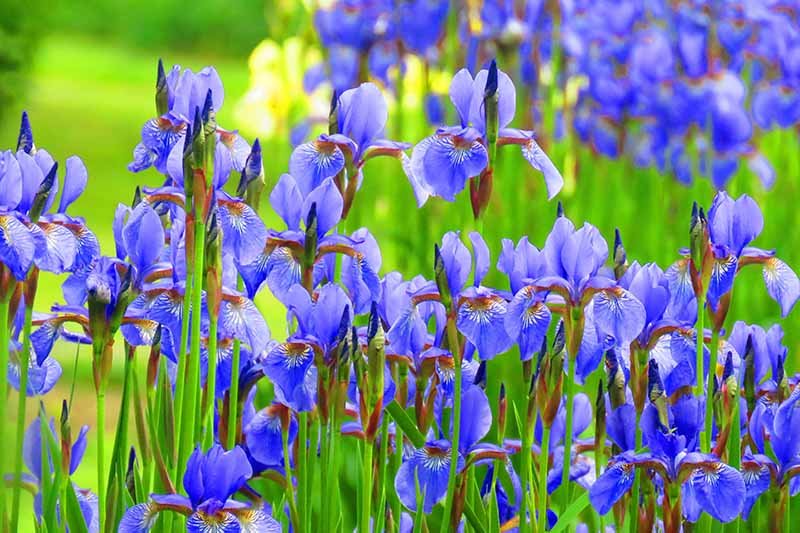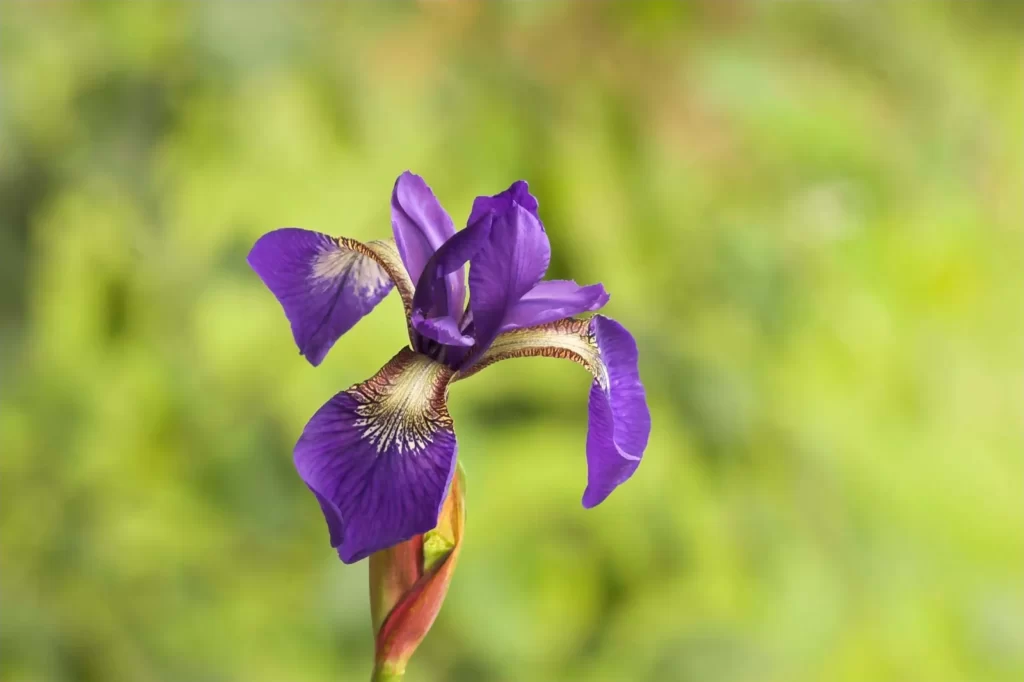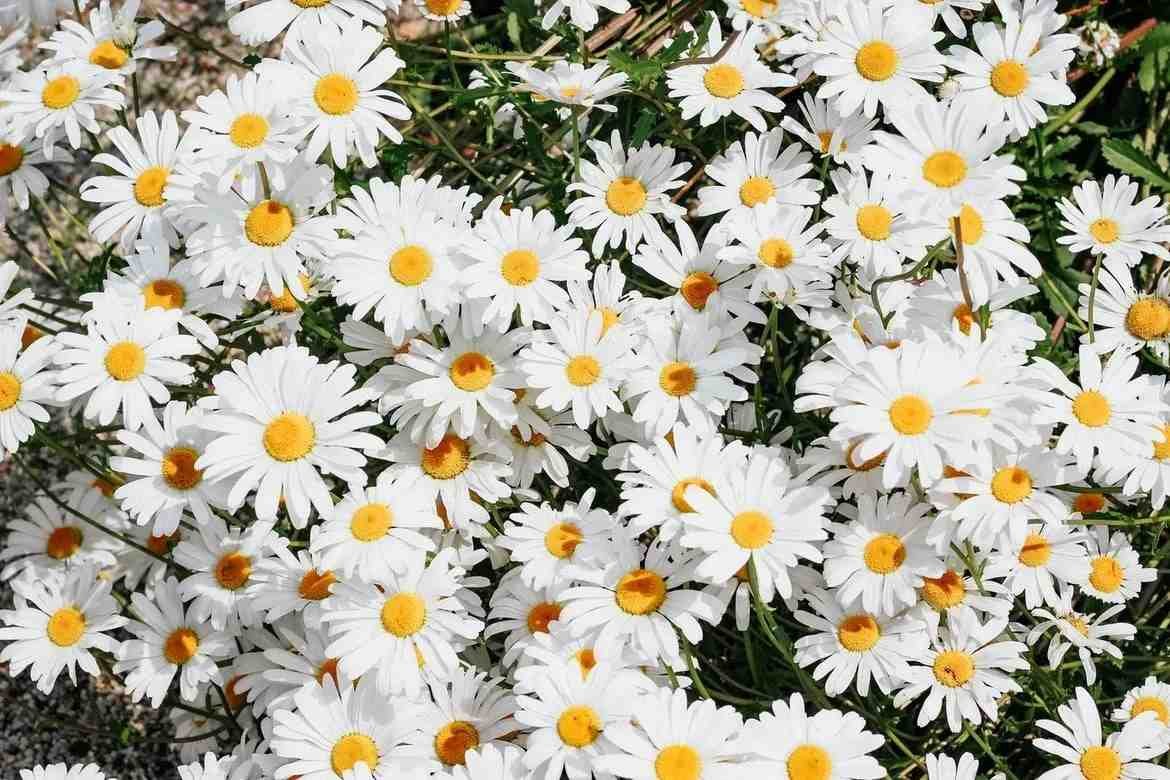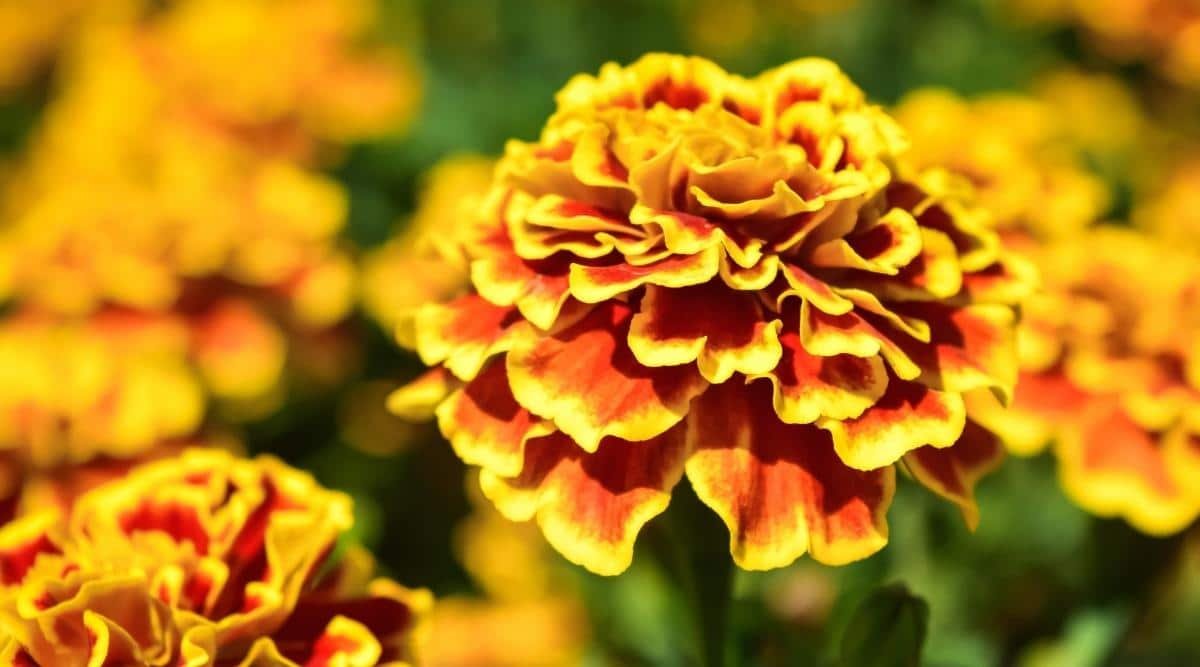Iris Flower Facts, Uses, Cultivation, Botany, Historical Significance
 Iris
Iris Iris Flower Facts | Description | Distribution and Habitat | Botany and evolution | Cultivation | Uses | Cultural | Interesting facts | frequently asked questions about Iris
Looking for a stunning and unique flower to add to your garden or bouquet? Look no further than the iris! With its bold and vibrant petals that come in a range of colors, the iris is a standout among floral varieties. Not only is it visually stunning, but it also has a rich history and symbolic significance. From Greek mythology to modern-day weddings, the iris has been a beloved flower for centuries. So whether you’re a seasoned gardener or a flower enthusiast, the iris is sure to add beauty and elegance to any setting.
Taxonomy of Iris
| Kingdom | Plantae |
|---|---|
| Clade | Angiosperms |
| Clade | Monocots |
| Order | Asparagales |
| Family | Iridaceae |
| Subfamily | Iridoideae |
| Tribe | Irideae |
| Genus | Iris |
Morphology of Iris
| Morphological Feature | Description |
|---|---|
| Flower Size | 7-15 cm in diameter |
| Petal Number | 3 |
| Petal Color | Purple, blue, white, yellow, orange, pink, red, brown |
| Petal Shape | Broad, flattened, sword-shaped |
| Sepal Number | 3 |
| Sepal Color | Green, brown, or purple |
| Stamen Number | 3 |
| Pistil Number | 1 |
| Fruit Type | Capsule |
| Fruit Shape | Ellipsoid |
| Fruit Length | 3-10 cm |
| Leaf Type | Simple |
| Leaf Arrangement | Basal |
| Leaf Shape | Linear, sword-shaped |
| Leaf Color | Green or variegated |
| Stem Color | Green or purple |
| Stem Height | 20-80 cm |

Description of Iris
The iris is a genus of flowering plants that belong to the family Iridaceae. This family is composed of around 300 species, including the iris, crocus, and gladiolus. The iris is a herbaceous perennial plant that grows from a rhizome, which is a thick underground stem. The plant has long, narrow leaves that are arranged in a fan-like pattern, and it produces striking, showy flowers.
The iris flower is composed of three petals, three sepals, and three stamens. The petals are large and broad, with a flattened, sword-shaped shape. They come in a wide variety of colors, including purple, blue, white, yellow, orange, pink, red, and brown. The sepals are usually green, brown, or purple and are smaller than the petals. The stamens are also three in number and are located in the center of the flower.
The iris flower is a popular choice for gardeners and florists alike due to its striking appearance and symbolic significance. The flower’s name is derived from the Greek word for rainbow, which is a nod to the wide variety of colors that the iris can display. In addition, the iris has been associated with a range of meanings throughout history, including faith, wisdom, courage, and hope.
Overall, the iris is a beautiful and fascinating flower that continues to capture the attention and admiration of people around the world. Its unique morphology and symbolic significance make it a true standout among floral varieties.
Distribution and habitat of Iris
The iris is a widespread genus of flowering plants that is native to temperate regions of the world. Its distribution ranges from Europe and North Africa to Asia and North America. Within this broad range, the iris can be found in a variety of habitats, from meadows and grasslands to wetlands and forests.
The iris is a hardy plant that is adapted to a wide range of environmental conditions. It can tolerate both cold and hot temperatures, and it is able to grow in a variety of soil types, from sandy to clay-rich. The plant is also able to withstand periods of drought and can grow in areas with low rainfall.
In terms of habitat, the iris is typically found in areas with well-draining soil and plenty of sunlight. It is often found growing alongside other wildflowers and grasses, and it can also be found in more cultivated settings such as gardens and parks.
In addition to its natural habitat, the iris has also been cultivated and hybridized extensively for ornamental purposes. As a result, it is now commonly found in gardens and flower beds around the world, where it is appreciated for its striking appearance and symbolic significance.
Overall, the iris is a versatile and adaptable plant that can thrive in a wide range of habitats and environments. Its distribution and habitat reflect its hardy and resilient nature, and its popularity as an ornamental plant attests to its enduring appeal.
Botany and evolution of Iris
The iris is a genus of flowering plants that belongs to the family Iridaceae. It is composed of around 300 species, many of which are native to temperate regions of the world. The iris is a herbaceous perennial plant that grows from a rhizome, which is a thick, underground stem that stores nutrients and allows the plant to survive periods of dormancy.
The botany of the iris is characterized by its distinctive morphology. The plant has long, narrow leaves that are arranged in a fan-like pattern, and it produces striking, showy flowers. The flowers are composed of three petals, three sepals, and three stamens. The petals are large and broad, with a flattened, sword-shaped shape. They come in a wide variety of colors, including purple, blue, white, yellow, orange, pink, red, and brown. The sepals are usually green, brown, or purple and are smaller than the petals. The stamens are also three in number and are located in the center of the flower.
The evolution of the iris is a subject of ongoing scientific investigation. It is believed that the genus originated in the northern hemisphere and spread to other parts of the world via various means, including migration and human cultivation. The iris is known to have been cultivated by humans for thousands of years, and many of the species that are commonly grown today are the result of extensive hybridization and breeding efforts.
Despite the long history of human cultivation and hybridization, the iris remains a fascinating and diverse genus of plants. Its distinctive morphology and broad range of colors make it a favorite among gardeners and flower enthusiasts around the world, while its evolutionary history continues to inspire scientific inquiry and investigation.
Cultivation of Iris
The iris is a popular flower that is widely cultivated for ornamental purposes. It is a hardy and resilient plant that is well-suited to a wide range of growing conditions and is therefore a popular choice for both amateur and professional gardeners.
When cultivating irises, it is important to choose a suitable location that provides plenty of sunlight and well-draining soil. The soil should be rich in organic matter and slightly acidic, with a pH of around 6.5 to 7.0. Irises can be planted in the spring or fall, depending on the species and local climate.
Before planting, it is important to prepare the soil by adding organic matter and loosening any compacted soil. The iris should be planted at a depth of around 4 to 6 inches, with the rhizome facing downwards. It is important to space the plants at least 12 to 18 inches apart to allow for proper growth and development.
Once planted, irises require regular watering and fertilization to ensure healthy growth. They should be watered deeply and infrequently, allowing the soil to dry out slightly between waterings. Fertilizer should be applied in the spring and fall, using a balanced fertilizer with equal amounts of nitrogen, phosphorus, and potassium.
In addition to regular care and maintenance, irises may require occasional division to prevent overcrowding and maintain healthy growth. Division should be done in the fall or early spring, with the rhizomes carefully separated and replanted in new locations.
Overall, the cultivation of irises is a rewarding and enjoyable process that can yield beautiful and striking flowers. With proper care and maintenance, irises can thrive and provide years of enjoyment for gardeners and flower enthusiasts alike.
Uses of Iris
The iris is a versatile flower that has been used for a variety of purposes throughout history. From its medicinal properties to its ornamental appeal, the iris has played an important role in human culture and society.
One of the most common uses of the iris is for ornamental purposes. Its striking appearance and broad range of colors make it a popular choice for flower beds, gardens, and decorative arrangements. In addition to its visual appeal, the iris also has symbolic significance in many cultures, representing qualities such as faith, wisdom, and courage.
In addition to its ornamental uses, the iris has also been used for medicinal purposes. Various parts of the plant, including the root and the leaves, have been used to treat a range of ailments, including coughs, digestive issues, and skin conditions. Some research has also suggested that the iris may have anti-inflammatory and anti-cancer properties.
The iris has also been used in culinary applications, particularly in the preparation of tea and other beverages. In some cultures, the dried leaves of the iris have been used to flavor wine, while in others, the plant has been used to make a type of candy or confection.
Overall, the iris is a versatile and useful plant that has played an important role in human culture and society. Its ornamental appeal, medicinal properties, and culinary applications make it a fascinating and multifaceted plant that continues to be valued and appreciated today.
Cultural and Historical Significance of Iris
The iris has a long and rich history of cultural and historical significance. From ancient mythology to modern symbolism, the iris has played an important role in human culture and society.
In ancient Greece, the iris was associated with the goddess Iris, who was said to use the rainbow as a bridge between heaven and earth. The flower was also believed to have been a symbol of power and royalty, with Greek kings often incorporating the iris into their regalia and heraldry.
During the Middle Ages, the iris continued to be associated with royalty and power. In Europe, the flower was often used to symbolize the Virgin Mary, while in Japan, the iris was a symbol of the samurai class.
In more recent times, the iris has become a popular choice for flower beds and decorative arrangements. Its broad range of colors and striking appearance have made it a favorite among gardeners and flower enthusiasts around the world.
In addition to its ornamental appeal, the iris has also been used for medicinal and culinary purposes, as well as in traditional crafts such as basket weaving and dyeing.
Overall, the iris is a fascinating and multifaceted flower that continues to hold cultural and historical significance to this day. Whether as a symbol of power and royalty, a decorative ornament, or a source of medicinal or culinary value, the iris remains an important and valued plant in human culture and society.
Explanatory Notes for Iris
Explanatory notes for a flower typically include information about its characteristics, uses, and cultural significance. For the iris, some possible explanatory notes might include:
- Characteristics: The iris is a perennial herbaceous plant that typically grows to a height of around 2-3 feet. It has long, narrow leaves and a distinctive flower that consists of three petals and three sepals. The flower can range in color from white to yellow, orange, pink, red, purple, or blue.
- Uses: The iris has a variety of uses, including ornamental, medicinal, culinary, and cultural. It is often used for decorative purposes in flower beds, gardens, and floral arrangements. It has also been used in traditional medicine to treat a range of ailments, and some research has suggested that it may have anti-inflammatory and anti-cancer properties. The iris has also been used in culinary applications, such as the flavoring of wine or the making of candy or confections. Additionally, the iris has played an important role in human culture and society, with symbolic significance in various cultures and historical contexts.
- Cultural Significance: The iris has held cultural significance throughout history, with symbolic meanings ranging from power and royalty to faith and wisdom. In ancient Greece, the iris was associated with the goddess Iris and was believed to have been a symbol of power and royalty. During the Middle Ages, it continued to be associated with royalty and was often used to symbolize the Virgin Mary. In modern times, the iris remains a popular and beloved flower that holds a special place in many cultures and societies around the world.
Overall, explanatory notes for the iris might provide a comprehensive overview of its physical characteristics, uses, and cultural significance, helping to deepen our understanding and appreciation of this fascinating and multifaceted plant.
Interesting facts about Iris
Here are 10 interesting facts about the iris flower:
- The name “iris” comes from the Greek word for “rainbow,” which refers to the flower’s wide range of colors.
- The iris is a symbol of faith, wisdom, and courage in many cultures.
- There are over 300 species of iris, with a wide variety of shapes, sizes, and colors.
- The iris is often used for ornamental purposes, but it also has medicinal properties and has been used to treat a range of ailments, including coughs, digestive issues, and skin conditions.
- The iris has been used in culinary applications, such as the flavoring of wine or the making of candy or confections.
- The iris is a hardy plant that can grow in a variety of environments, from dry deserts to damp marshes.
- The iris is often associated with royalty and power, and has been used in heraldry and regalia throughout history.
- Some species of iris have a unique fragrance, which can range from spicy to floral to fruity.
- The iris is a popular subject in art and literature, and has been featured in works by artists such as Vincent van Gogh and Georgia O’Keeffe.
- The iris is the state flower of Tennessee and the national flower of France, and is celebrated annually in the Iris Festival in Florence, Oregon.
General queries or frequently asked questions about Iris
What is an iris flower?
The iris is a perennial flowering plant that belongs to the iris family, Iridaceae. It is known for its distinctive flower, which has three petals and three sepals, and comes in a variety of colors.
What are the different types of iris flowers?
There are over 300 species of iris, with a wide range of shapes, sizes, and colors. Some common types of iris include bearded iris, Siberian iris, Japanese iris, and Dutch iris.
How do you care for iris flowers?
Iris flowers require well-draining soil and plenty of sunlight. They should be watered regularly, but not excessively, and should be fertilized once a year. In addition, iris flowers should be divided every three to four years to prevent overcrowding and promote healthy growth.
What is the symbolism of iris flowers?
In many cultures, iris flowers are associated with faith, wisdom, and courage. They have also been used historically as a symbol of power and royalty, and have been featured in heraldry and regalia.
Are iris flowers poisonous?
While iris flowers are not generally considered poisonous, some parts of the plant can be toxic if ingested. It is important to keep iris flowers away from small children and pets, and to exercise caution when handling the plant.
Can iris flowers be used for medicinal purposes?
Yes, iris flowers have been used in traditional medicine to treat a range of ailments, including coughs, digestive issues, and skin conditions. However, it is important to seek medical advice before using iris flowers for medicinal purposes.
What is the cultural significance of iris flowers?
Iris flowers have played an important role in human culture and society, with symbolic significance in various cultures and historical contexts. They are also often used for decorative purposes, as well as in traditional crafts and culinary applications.
What is the origin of the iris flower?
The iris flower is believed to have originated in Europe and Asia, although it has since been cultivated and naturalized in many other parts of the world.
What is the national flower of France?
The national flower of France is the fleur-de-lis, which is often associated with the iris flower due to its similar appearance. However, the fleur-de-lis is not actually a species of flower.
Conclusion
In conclusion, the iris flower is a fascinating and versatile plant with a rich history and cultural significance. With over 300 species, it comes in a wide variety of shapes, sizes, and colors, and has been used for everything from medicinal purposes to decorative arts. The iris is a hardy plant that can grow in many different environments, making it a popular choice for home gardeners and landscapers. Its symbolism and association with royalty and power have made it an enduring cultural icon, while its beauty and versatility continue to inspire artists and designers around the world. Whether used for ornamental or practical purposes, the iris flower remains an important part of human culture and society.












